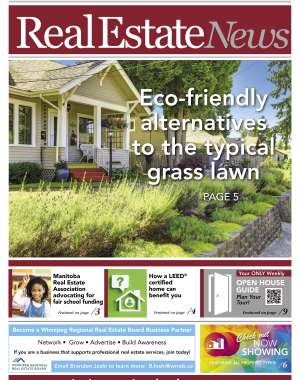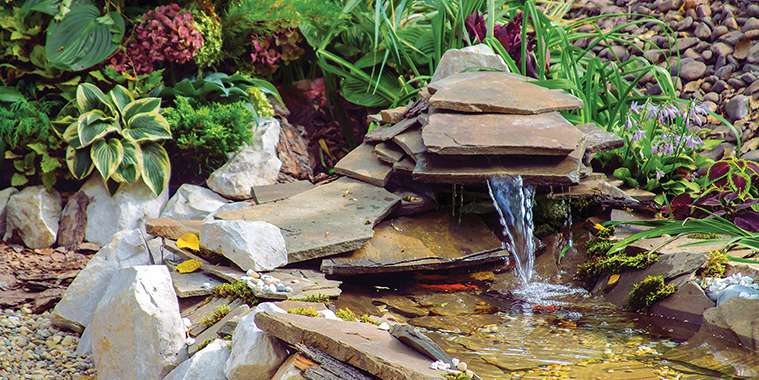World Environment Day, held annually on June 5, brings together millions of people from across the globe in an effort to protect and restore the Earth. This year marks the event’s 50th anniversary! While this year’s theme focusses on plastic pollution, every choice we make impacts our environment.
When you envision the ideal front lawn, do you see the white picket fence surrounding lush, clean-cut grass? That look takes a lot of work to both establish and maintain, along with harsh chemicals and lots of water, so as we lean toward more environmentally sustainable options in everything from our clothing to our food, plenty of Canadians are choosing kinder options for their greenspaces, too.
Even those who enjoy a well-kept lawn may find not every corner of their yard supports bluegrass or fescue. While it’s usually easy to find garden plants to fill virtually any condition, sometimes the desire is for healthy ground cover. Here are some alternatives to grass that may work for you.
Why grass fails
Nutrient-deficient, compacted soil with poor drainage affects virtually any grass-based lawn without coordinated care. Shade is another enemy, unless you’ve selected a species that tolerates conditions with less sun. Over-mowing or cutting too short may create a desirable manicured look for the short-term, but it invites disease, invading pests, and weeds.
Oh, and if you’ve heard the axiom that female dog urine kills grass, it’s a bit misleading. Dog urine from both sexes causes nitrogen burning. Male dogs tend to lift a leg to urinate while females favour squatting. The difference is the concentrated pooling of urine.
Low-maintenance coverage
Canadian summers are short enough that you may want to reduce the time you spend caring for your lawn, preferring to put your effort into flower beds, vegetable gardens, or perhaps heading to the cottage.
You can keep up the idea of green ground cover that requires little water, maintains low height, and even self-fertilizes without needing to eliminate your existing lawn first. Offering drought tolerance is key to reducing the amount of water used on your lawn. Look for ground cover species like creeping red fescue, white clover, microclover, ryegrass varieties and sedge varieties.
There are so many microclimates in Canada that you’ll likely have local options to suit your needs.
Rain gardens
Rain gardens are exactly what they sound like — gardens watered by rain — and they may be the answer if you have drainage challenges in your yard. The water from your eavestroughs, as well as melting snow, runs down to hydrate the garden while also preventing water build-up around your home. Building a multi-layer stone bed topped with river rock provides an attractive way to divert water away from your foundation while slowing the flow and providing a level of natural filtration that helps to avoid an overload to your municipality’s storm sewers.
A well-designed rain garden requires some excavation (don’t forget to get the proper permits before you dig!) to make room for layers of gravel, arranged smallest to largest, as you fill the bed. Topped with the decorative river rock mix of your choice, a rain garden provides function in a low-maintenance alternative to grass.
Earthwatch Institute® has a full list of tips to build an effective rain garden, some of which include:
• Adding rocks to the entrance of the garden to prevent too much water from entering at once;
• Mapping out the layout of your garden; and
• Finding the right soil and plants for your area and needs — permeable soil, butterfly weed, and hostas are good places to start.
Native meadows
This may be a lawn alternative if you like a variety of colours rather than a uniform green, and you’re hoping to attract pollinating bees and butterflies. Consider the gorgeous meadows you’ve driven past that, left to their own devices, flourish on their own with only the rain, sun and wind for maintenance.
The idea of a native meadow isn’t confined to the middle provinces. Every region in Canada has a host of plants and wildflowers that thrive. A few species that do well in most parts of the country include asters, coneflowers, wild strawberry and yarrow.
It takes a few seasons of diligence to extract invasive plants that take a liking to your garden, but once established, a native meadow may be the lowest maintenance alternative to grass apart from occasional mow-downs to encourage fresh growth.
Perhaps the biggest drawback to this option is local bylaws that control plant height to deter vermin and unwanted seed spreading. Be sure of your local rules before investing your energy and efforts.
Of course, you don’t have to limit yourself to just one of these strategies, you can mix and match. You can also consider expanding existing flower beds or starting new gardens to reduce the area, maintenance, and expense of a traditional grass-covered yard. Or, if you’re willing to forgo the natural look altogether, you can always opt for a patio or deck to take up most of the greenspace.
With some effort now, you can look forward to less tedious lawn maintenance and more fun and relaxation this summer. All while feeling great about your contribution to sustainability.
— Realtor.ca



